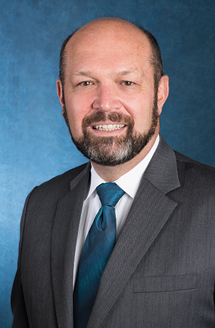December 2015—I have long admired Oliver Sacks, MD, the neurologist and best-selling author who died in August of metastatic melanoma at the age of 82. Many knew him through The Man Who Mistook His Wife for a Hat, although I first became aware of him through Uncle Tungsten.

Richard C. Friedberg, MD, PhD
Dr. Sacks often wrote about how people can compensate for visual, auditory, and cognitive deficits. In The Mind’s Eye, for example, he introduced a blind educator who could conjure an accurate image of the surrounding landscape by listening to raindrops falling nearby. He also wrote about his own development of a scotoma (“blind spot”) in 2005, which turned out to be melanoma.
If intellectual curiosity is what Dr. Sacks is best known for, equanimity would be a close second. In a way that may resonate with some pathologists, he had some fun studying the scotoma while actively living with it—still writing, swimming, and consulting almost to the end. In The Mind’s Eye, Dr. Sacks described how he tried to understand how his brain adapted after ocular surgery had expanded his blind spot. He concluded that the visual cortex continuously sampled the context within which it appeared and interpolated the missing elements, effectively creating a visual patch to counter the scotoma.
Most of you will be reading this around the start of the new year. Thinking about that prompted me to recollect one of Dr. Sacks’ New York Times opinion pieces. “This Year, Change Your Mind” (www.nytimes.com/2011/01/01/opinion/01sacks.html) was published on a rather binary date: 01/01/11. Things took off from there.
“This Year, Change Your Mind” concerned the persistence of neuroplasticity well into old age. It described in some detail how readily a damaged brain can recover and even rewire. The cognitive benefits of lifelong learning are well known, but applying that advice in a new context—embracing new technologies, for example—can be interesting and even intellectually provocative.
I’d like us to think about how we can most effectively elude our own scotomas by considering our own contexts. I wonder if thinking about where we come from, and trying to assess and weigh the impact of where others are coming from, would make our collaborations more productive and enjoyable.
Some of us are early adopters, irresistibly drawn to new tools. Others are more skeptical. Neither position is good or bad, but we do need to investigate our differences because what we don’t talk about remains indistinct. In the context of today’s fevered emergence and ready embrace of innovation, we need to know our options.
Digital pathology is a good example. Regulatory and payment barriers persist, but they won’t be here forever and we need to prepare for the day when the technology becomes widely available. Certainly, digital pathology could greatly expand our role and our value. For some, digital pathology stirs protectionist sentiments driven by worry about potential availability to unqualified practitioners that could compromise patient safety. I do not share this concern; our images are far too unique and complex, I think, to be hijacked by nonpathologists. Remember, most physicians believe they can read many radiology images, whereas few nonpathologists would attempt to read our slides. But we should talk about it.
I hear worries, too, that digital pathology could encourage offshoring. Most of these concerns derive from an analogy to digital radiology. It seems to me that these fears fail to take into account the routine, absolute need for emergent off-hour CT interpretations for trauma and stroke. Offshoring of pathology interpretations seems unlikely to me, given that the demand for immediate reads is low and the lion’s share of subspecialty expertise resides here in the United States. Indeed, I would argue that digital pathology is far more likely to present distinct opportunities for onshoring. Another good topic for discussion.
Innovative technology is also driving growth in clinical informatics. Our laboratories create powerful databases that can flag threats to population health. As health care reform continues to expand access and thereby broaden the databases, our ability to interpret and learn from aggregating data will grow along with it. The public health implications are clear. Those pathologists who become their hospitals’ clinical informatics experts will see their value grow as their tools are put to increasingly sophisticated uses.
Drowning in 10 feet of water is no different from drowning in 10,000 feet of water, but if you can keep your head up, you may have access to bigger fish. If we want to move forward, we can’t worry about whether the point of safety is just a little out of reach or a lot out of reach. Out of reach is out of reach. The wiser course would be to get used to the water and pursue the big fish.
Both action and inaction present risks, but as the saying goes, “Not to decide is to decide.” Bottom line, evaluating new patient-care technologies is part of our job and clinical informatics is, too. As the physicians who bridge science and medicine, we have a responsibility to discern which new technologies merit investigation and drive efforts to explore them. We have plenty to do already and new responsibilities will require resources, but these services could be extremely useful and our colleagues would quickly see their value.
Medicine has become a team sport and every team member has personal scotomas. If we can remember that, we can discourage silent criticism during collective decision-making by establishing a cultural climate where respectful disagreement is comfortable and constructive. As Dr. Sacks demonstrated, many scotomas can be tamed. If not, there’s often a workaround. If we start from what we have in common, none of us will be blindsided.
[hr]
Dr. Friedberg welcomes communication from CAP members. Write to him at president@cap.org.